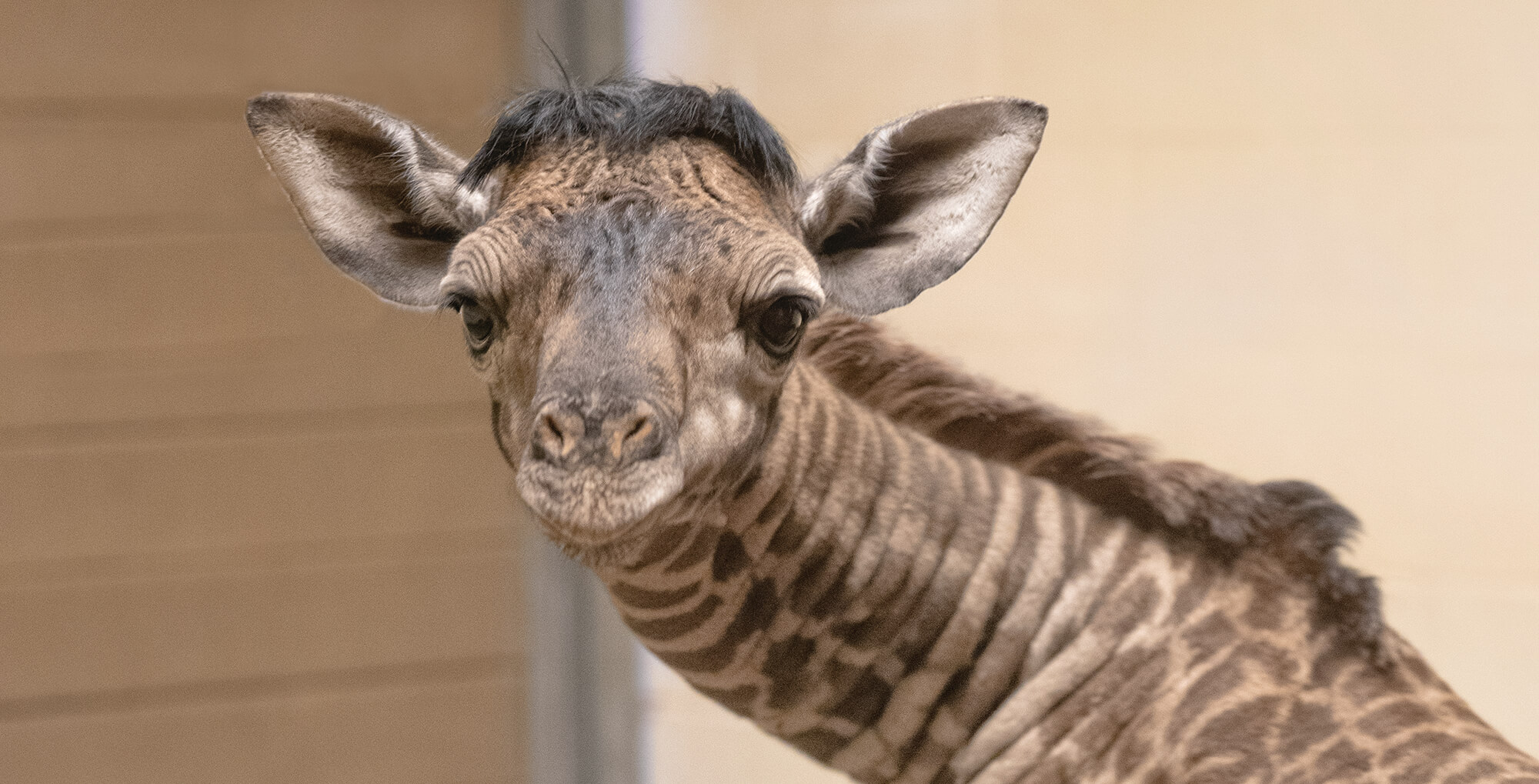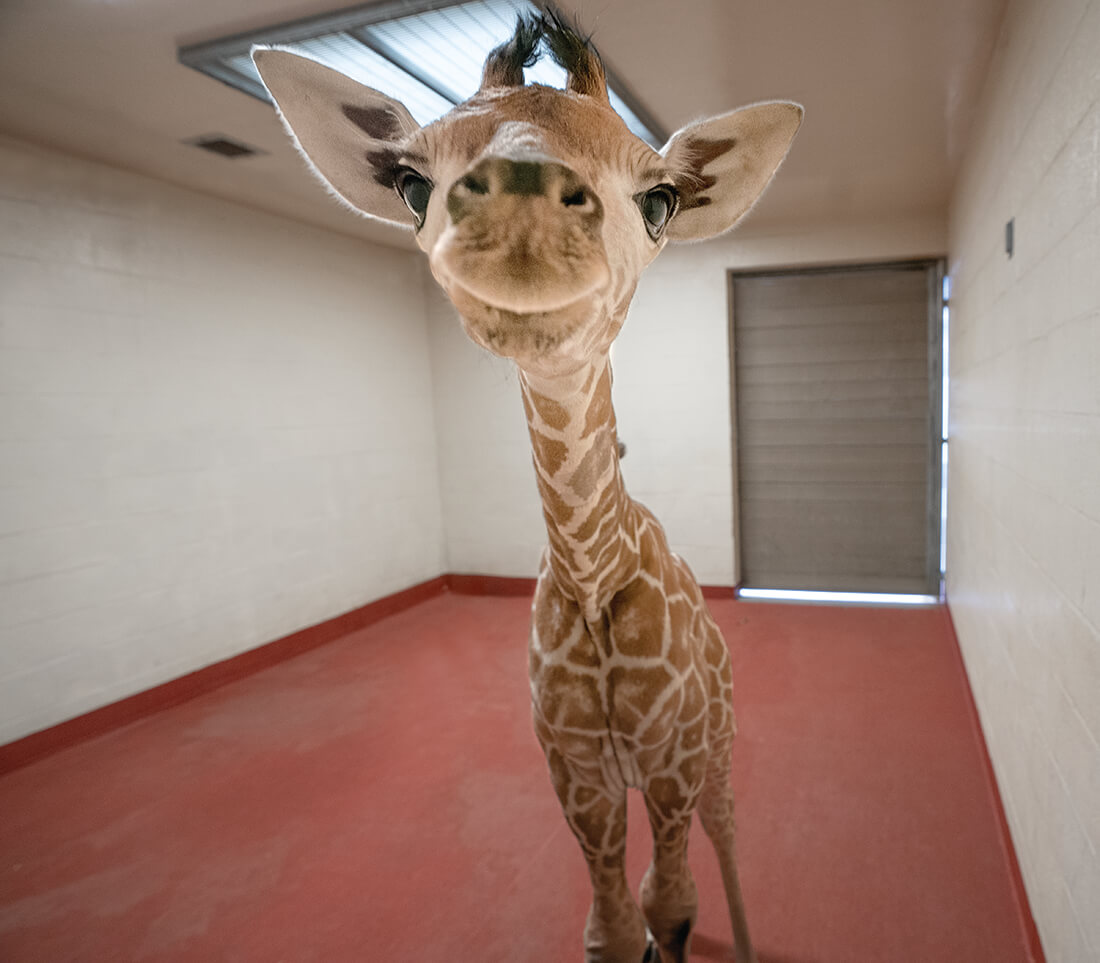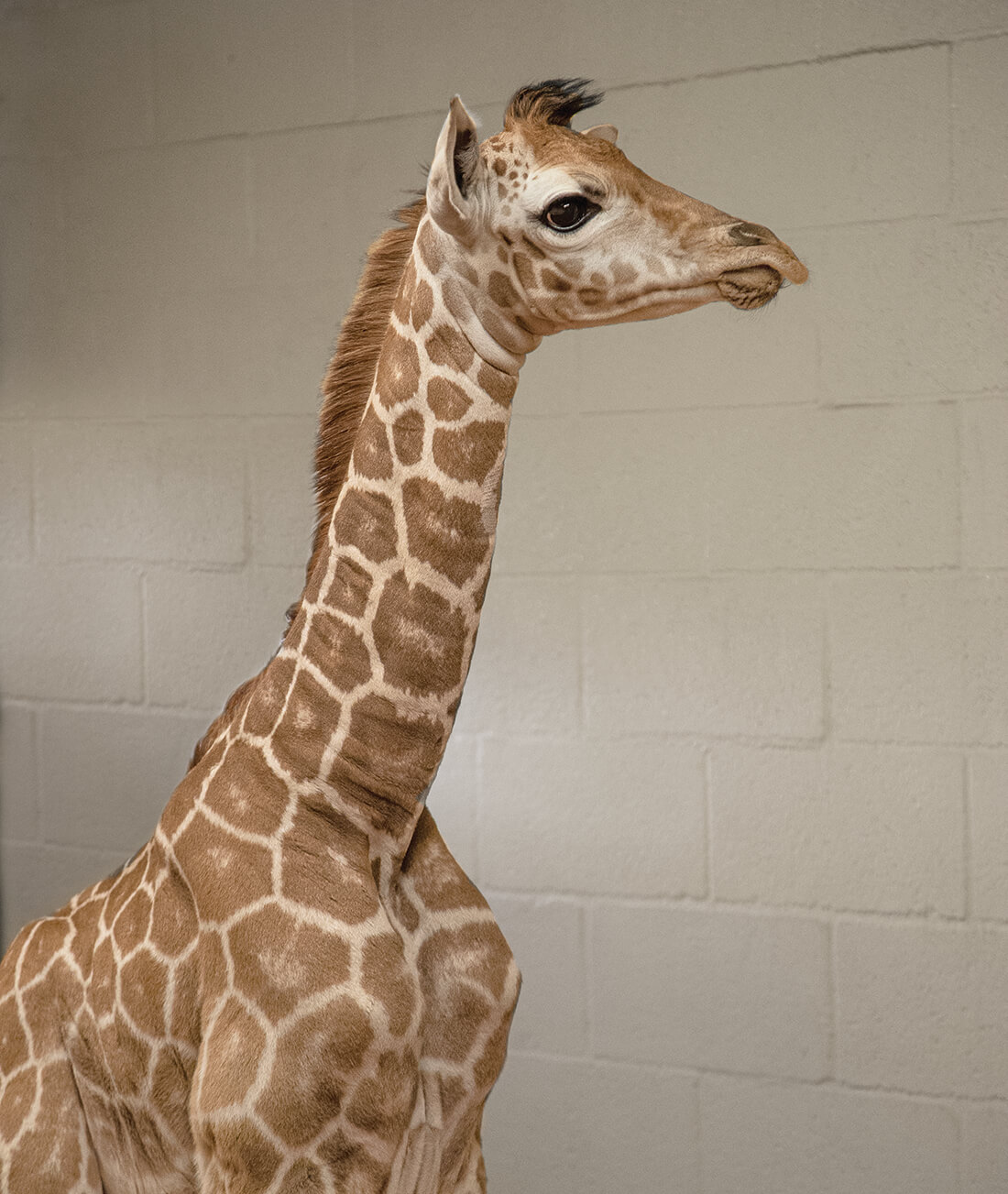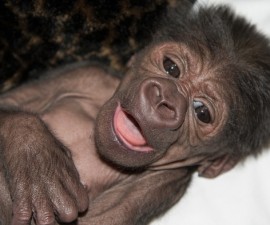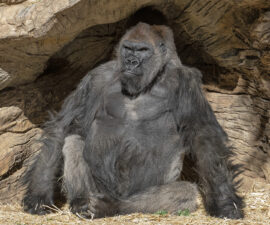Raising Giraffe Calves at the Park
BY Peggy Scott
Photography by Ken Bohn
While two giraffes at the Safari Park have names that sound like those of a pair of legendary intergalactic heroes, their story is a saga for the ages all on its own. When the male calves, named Obi and Yodha, arrived last spring under less-than-ideal circumstances, a force was certainly with them—in the form of Safari Park keepers and veterinary staff. Different ailments complicated the calves’ early days. But animal care staff were determined to complete their mission: to nurse the babies back to health and reunite them with the herd.
A Disturbance in the Field
Acacia gave birth to her baby boy, Obi, on January 27, 2019, in the East Africa field exhibit. All appeared fine, until keepers noticed that the calf was not nursing well. “After a field assessment, Obi was taken to the Paul Harter Veterinary Medical Center, where a CT scan showed inflammation in his nasal cavity and throat,” explains Kimberly Millspaugh, senior keeper at the Safari Park. “He ended up staying there for three weeks while he was being treated for an infection.” While the youngster’s name may conjure up the image of a robed, wise elder, in this case, “Obi” is a nod to the calf’s perseverance—it means “heart” in the Yoruba language of Nigeria.
Just a few weeks after Obi was born, Yodha arrived on February 22, the offspring of Masai giraffes Gasira and Robert. This calf needed help, as well. “Yodha had trouble standing,” Kimberly says. “Wet weather had caused a bad footing situation, and this was keeping him from moving successfully. So he went to the hospital for about a week for supportive care.” Yodha fought hard to get on his feet, living up to his name, which is Sanskrit for “warrior.” And he was victorious!
It was decided early on that the calves should be hand raised and bottle-fed, as Gasira hadn’t formed a bond with Yodha, and neither he nor Obi were likely to thrive if they were simply returned to their mothers. At first, the boys received four bottles a day; now they receive two daily.
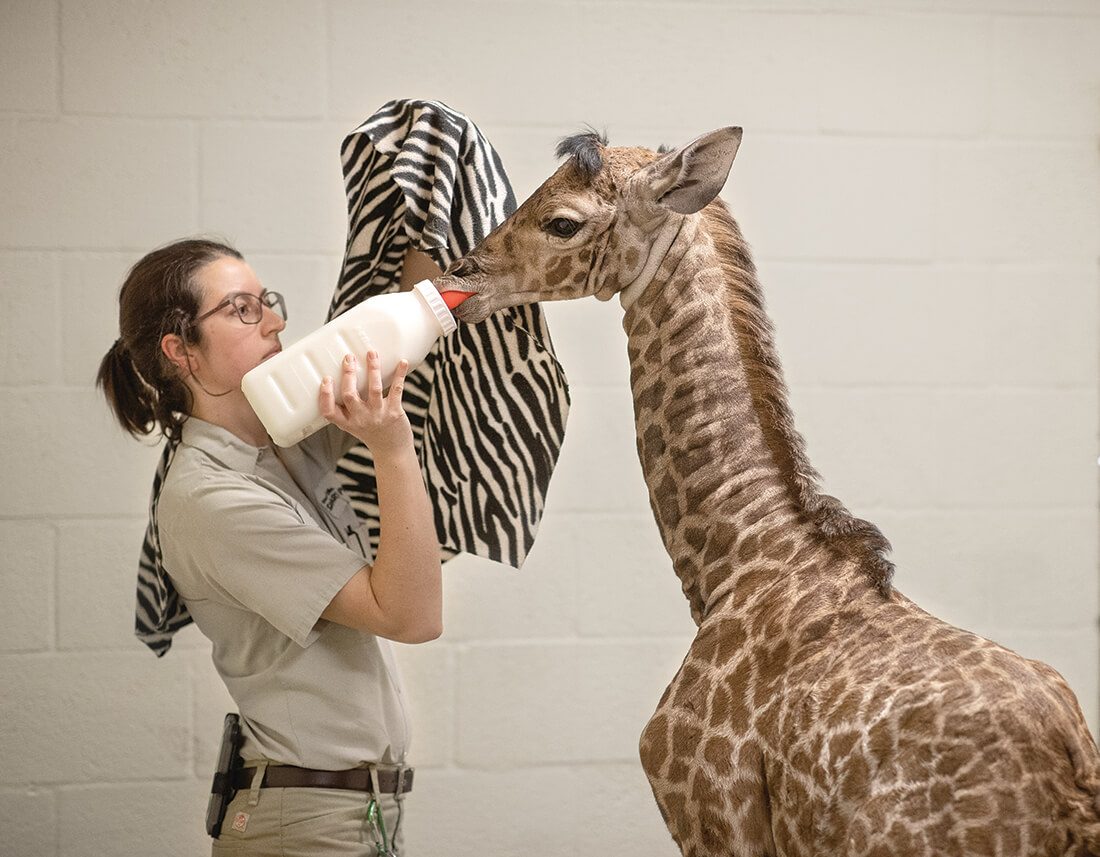
BOYS’ LIFE
Bottle-feeding giraffe calves (like Yodha, seen here) is a tall order. Keepers use blankets that have been rubbed on calves’ mothers to help keep the youngsters from imprinting on humans.
Once the calves were discharged from the hospital, they still needed TLC, which, in this case, was a little tricky. Most animal babies that need special care are taken to the Ione and Paul Harter Animal Care Center (ACC) at the Park, but at roughly six feet tall, giraffe calves require more room—preferably with heat. According to Melodi Tayles, a lead keeper at the Safari Park, there was a perfect solution. “The okapi barn provided the heat and shelter that the calves needed,” Melodi says. “Once they were big enough, we could transfer them closer to the herd.”
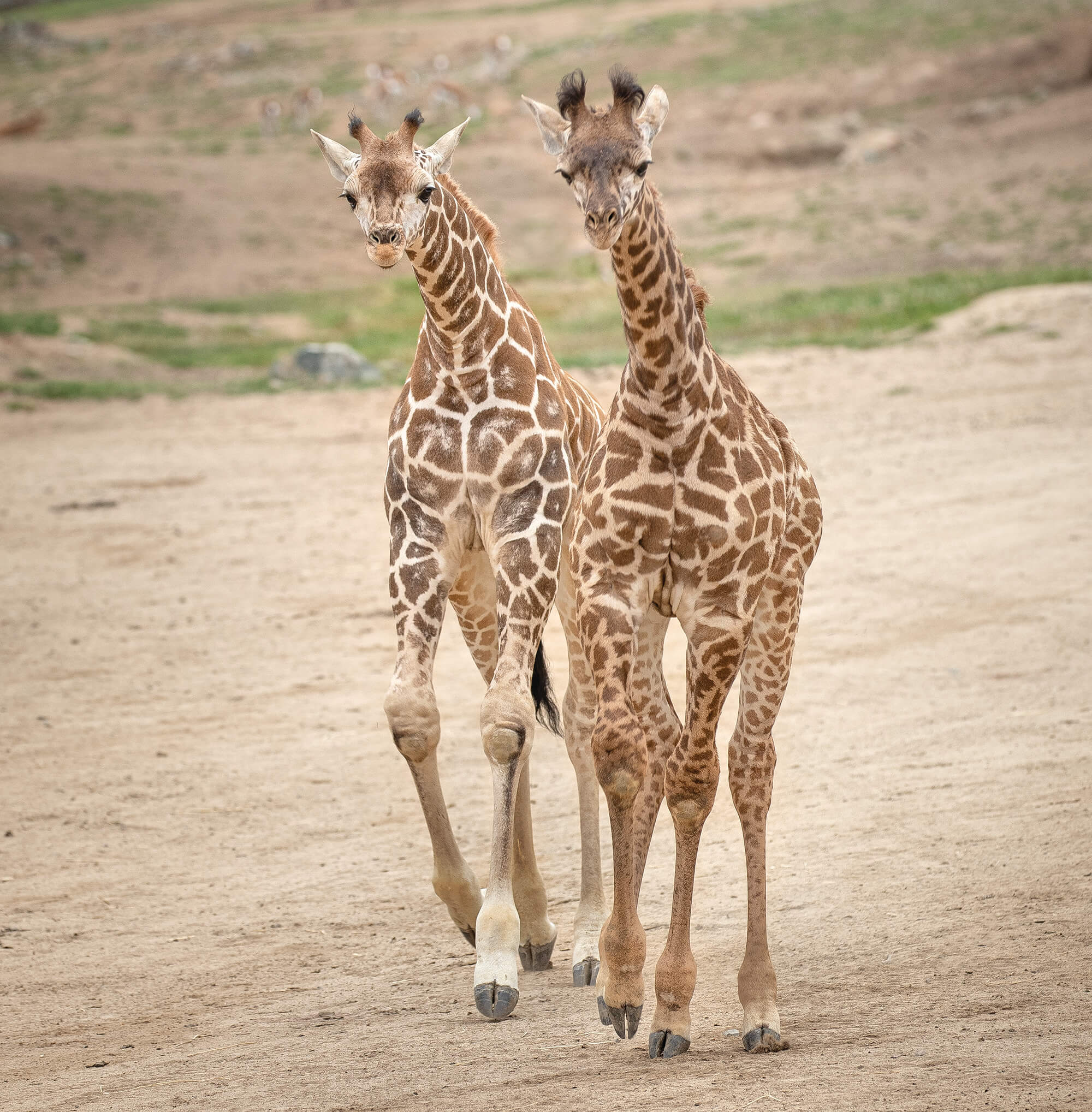
In a Boma Not Far, Far Away…
Even though their beginnings weren’t ideal, it was fortuitous, notes Kimberly, that the boys arrived within such a short time of each other. “They’ve had each other to grow up with,” she says. “This is important because giraffes are social. It was good they had company, both in the okapi barn and after.” Once they—rather quickly—outgrew the okapi barn, the calves were moved to a boma (a protective enclosure) in the South Africa field exhibit. The boma was the perfect location for the boys to not only continue to grow physically, but to further their social development. “The Masai herd could come visit over the wall,” Kimberly explains. “They always had their giraffe friends close by. They were able to learn about the other giraffes and how the herd works.”
As the calves grew, so did their personalities. “Yodha is the bold one; even though Obi is larger,” Kimberly says. “Obi is older, but he’s not in charge.”
Joining the Alliance…
On introduction day, June 4, 2019, the calves had different reactions to their expanding world. “When they opened the gate, Yodha charged right out,” Kimberly says. “Obi was a little reluctant, until one of the young females in the herd came into the boma and led him out. The two calves had a great time running around. For the first week, they still spent some time in the boma, and then gradually increased field time until they were ready to join the herd full time.”
The boys’ new world included their herd-mates—an adult male, Gowan; Obi’s mother, Gasira; and three young females, Tazama, Mara, and Zindzhi—as well as a somewhat varied cast of new characters. “The ostriches have chased the boys, and they have chased the ostriches,” Melodi says. “They are learning the parameters.” The exhibit is also home to springbok, waterbuck, sable antelope, gemsbok, and eland. Melodi notes that the boys have melded well into the giraffe herd, and that all the animals are learning to get along and share space, just as they might in the wild. There are certain amenities available to the young giraffes, such as six-foot-tall feeding stations ideal for the calves—they can reach the food, but their antelope and rhino neighbors can’t.
It’s fascinating to watch the herd dynamics change as individual relationships form and their story continues. “It was so rewarding to watch the two giraffe boys join the giraffe herd,” Kimberly says. “It’s what we have been working toward for these boys for the past five months, and it was such a joy to see it happen and go so well. A lot of planning and preparation from many keepers, animal care supervisors, managers, and curators happened to make that event possible.”
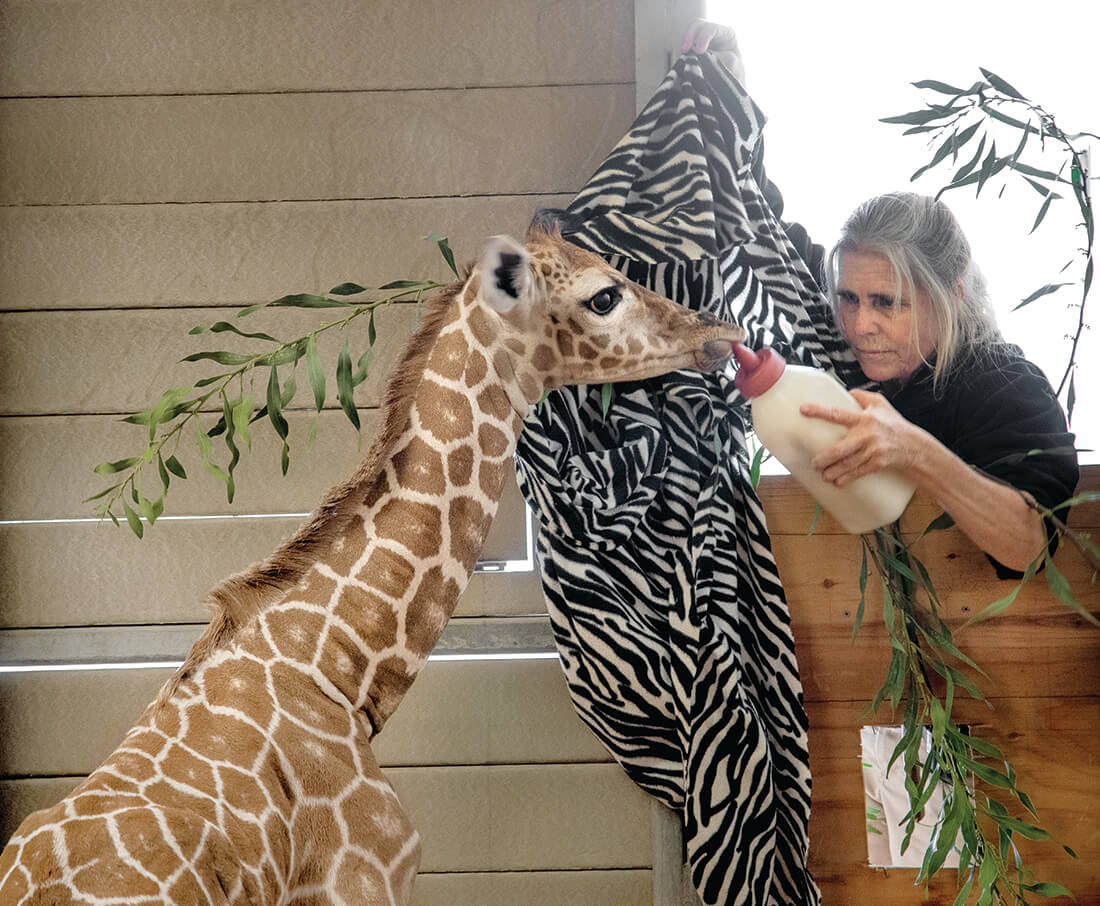
BOTTLE SERVICE
Feeding the calves (Obi seen here) in the early days was a job unto itself—but with great rewards.
The saga for giraffes in the wild, however, isn’t quite as upbeat. Earlier this year, the U.S. Fish and Wildlife Service conducted an initial review of an Endangered Species Act petition to list giraffes as Endangered. In addition, giraffes are listed as Vulnerable on the International Union for Conservation of Nature (IUCN) Red List of Threatened Species, and their populations have declined up to 40 percent in the last 30 years. This is a story in need of a rewrite, and every addition, such as Obi and Yodha, is a promising development.
Park visitors can observe the next chapters of the story unfolding by taking the Africa Tram, where it’s possible to view the giraffe herd and periodically spot the calves that are, indeed, the giraffes they have been looking for.


